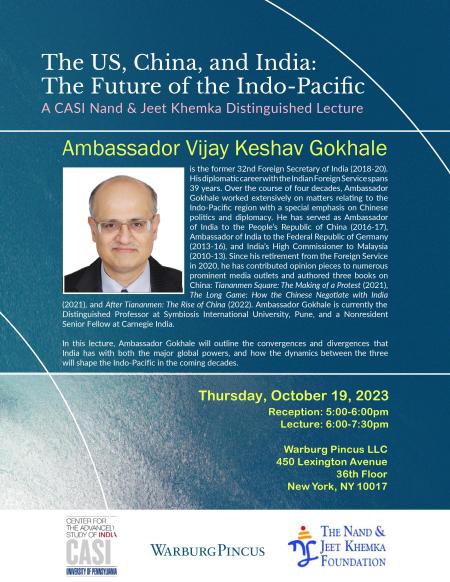Vijay Keshav Gokhale

Ambassador Vijay Keshav Gokhale is the former 32nd Foreign Secretary of India (2018-20). His diplomatic career with the Indian Foreign Service spans 39 years. Over the course of four decades, Ambassador Gokhale worked extensively on matters relating to the Indo-Pacific region with a special emphasis on Chinese politics and diplomacy. He has served as Ambassador of India to the People’s Republic of China (2016-17), Ambassador of India to the Federal Republic of Germany (2013-16), and India’s High Commissioner to Malaysia (2010-13). Since his retirement from the Foreign Service in 2020, he has contributed opinion pieces to numerous prominent media outlets and authored three books on China: Tiananmen Square: The Making of a Protest (2021), The Long Game: How the Chinese Negotiate with India (2021), and After Tiananmen: The Rise of China (2022). Ambassador Gokhale is currently the Distinguished Professor at Symbiosis International University, Pune, and a Nonresident Senior Fellow at Carnegie India. In this lecture, Ambassador Gokhale outlines the convergences and divergences that India has with both the major global powers, and how the dynamics between the three will shape the Indo-Pacific in the coming decades.

